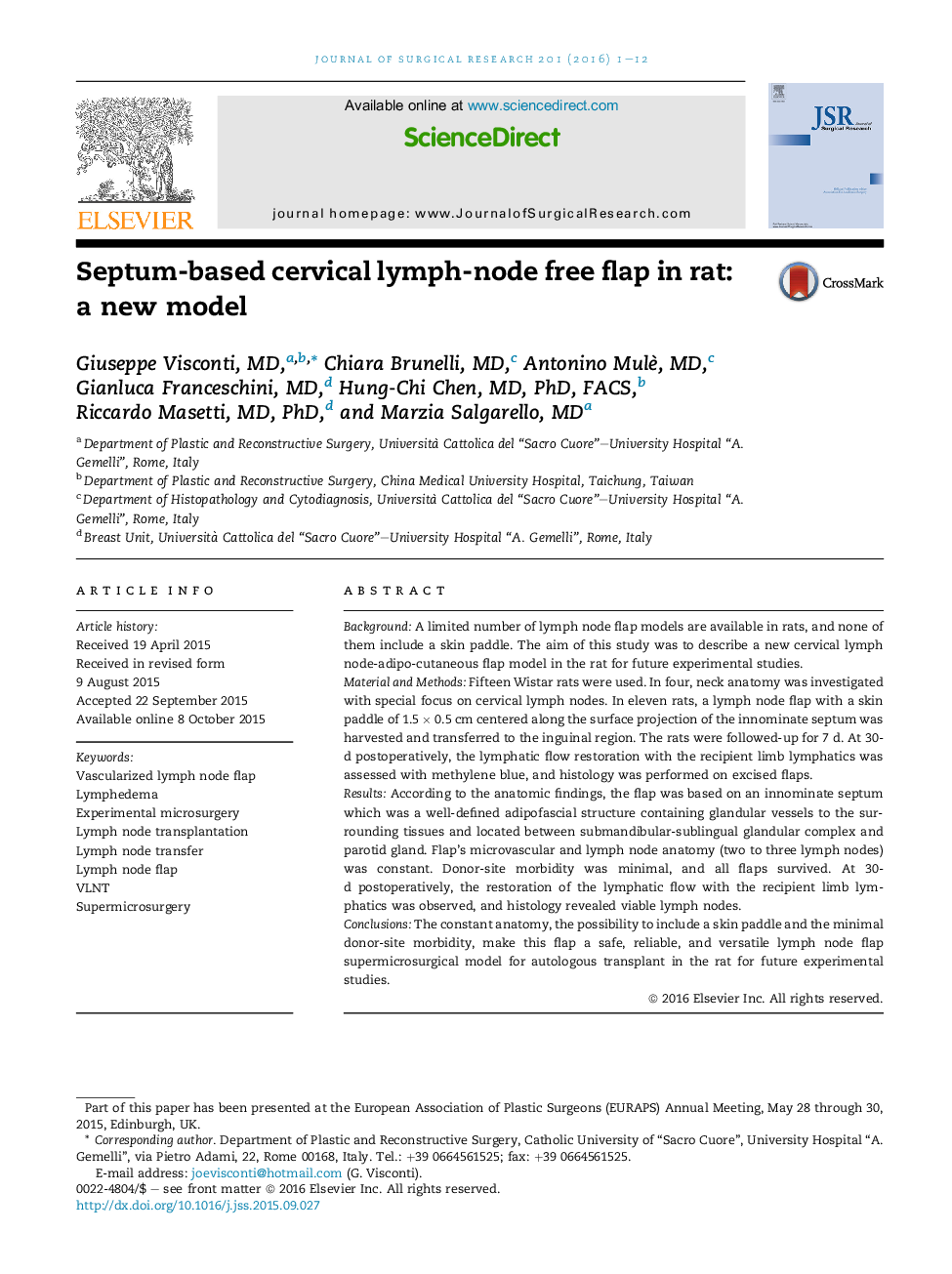| Article ID | Journal | Published Year | Pages | File Type |
|---|---|---|---|---|
| 6253344 | Journal of Surgical Research | 2016 | 12 Pages |
BackgroundA limited number of lymph node flap models are available in rats, and none of them include a skin paddle. The aim of this study was to describe a new cervical lymph node-adipo-cutaneous flap model in the rat for future experimental studies.Material and MethodsFifteen Wistar rats were used. In four, neck anatomy was investigated with special focus on cervical lymph nodes. In eleven rats, a lymph node flap with a skin paddle of 1.5Â ÃÂ 0.5Â cm centered along the surface projection of the innominate septum was harvested and transferred to the inguinal region. The rats were followed-up for 7Â d. At 30-d postoperatively, the lymphatic flow restoration with the recipient limb lymphatics was assessed with methylene blue, and histology was performed on excised flaps.ResultsAccording to the anatomic findings, the flap was based on an innominate septum which was a well-defined adipofascial structure containing glandular vessels to the surrounding tissues and located between submandibular-sublingual glandular complex and parotid gland. Flap's microvascular and lymph node anatomy (two to three lymph nodes) was constant. Donor-site morbidity was minimal, and all flaps survived. At 30-d postoperatively, the restoration of the lymphatic flow with the recipient limb lymphatics was observed, and histology revealed viable lymph nodes.ConclusionsThe constant anatomy, the possibility to include a skin paddle and the minimal donor-site morbidity, make this flap a safe, reliable, and versatile lymph node flap supermicrosurgical model for autologous transplant in the rat for future experimental studies.
